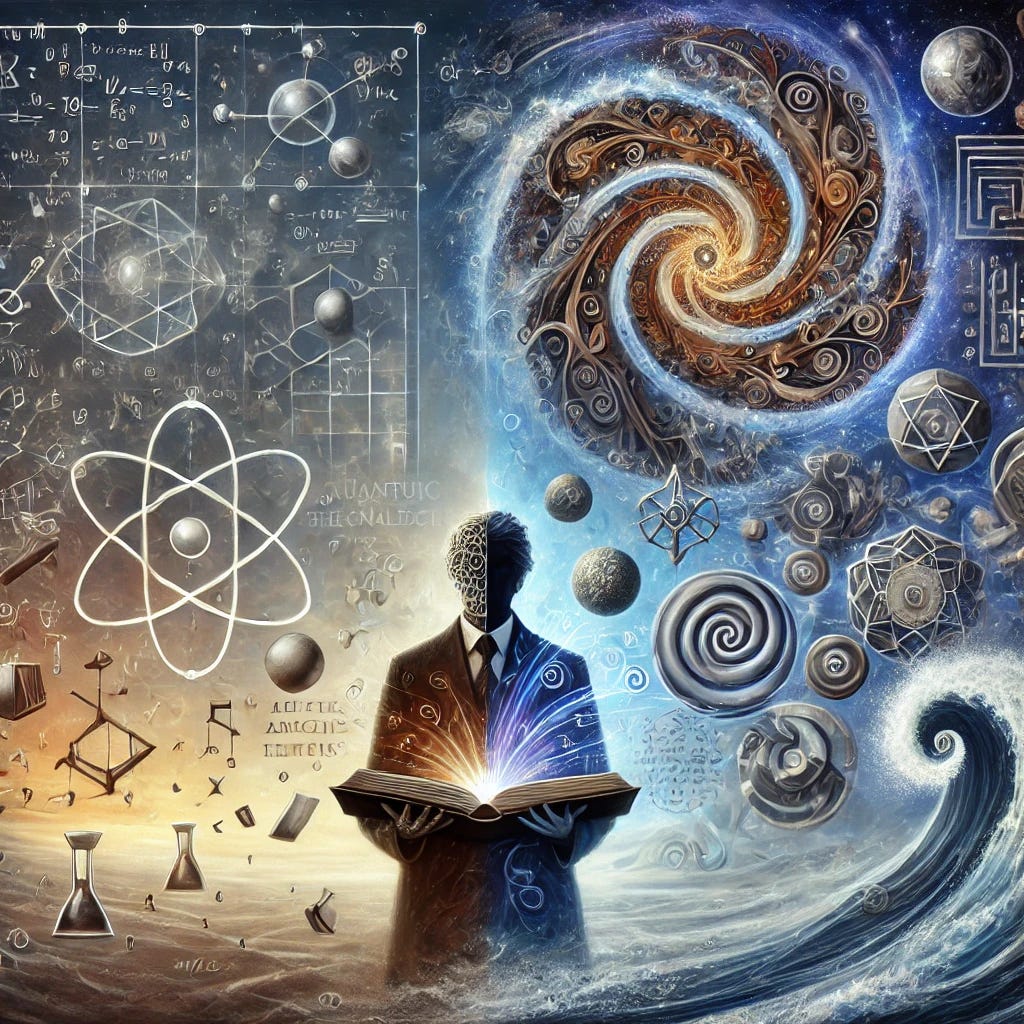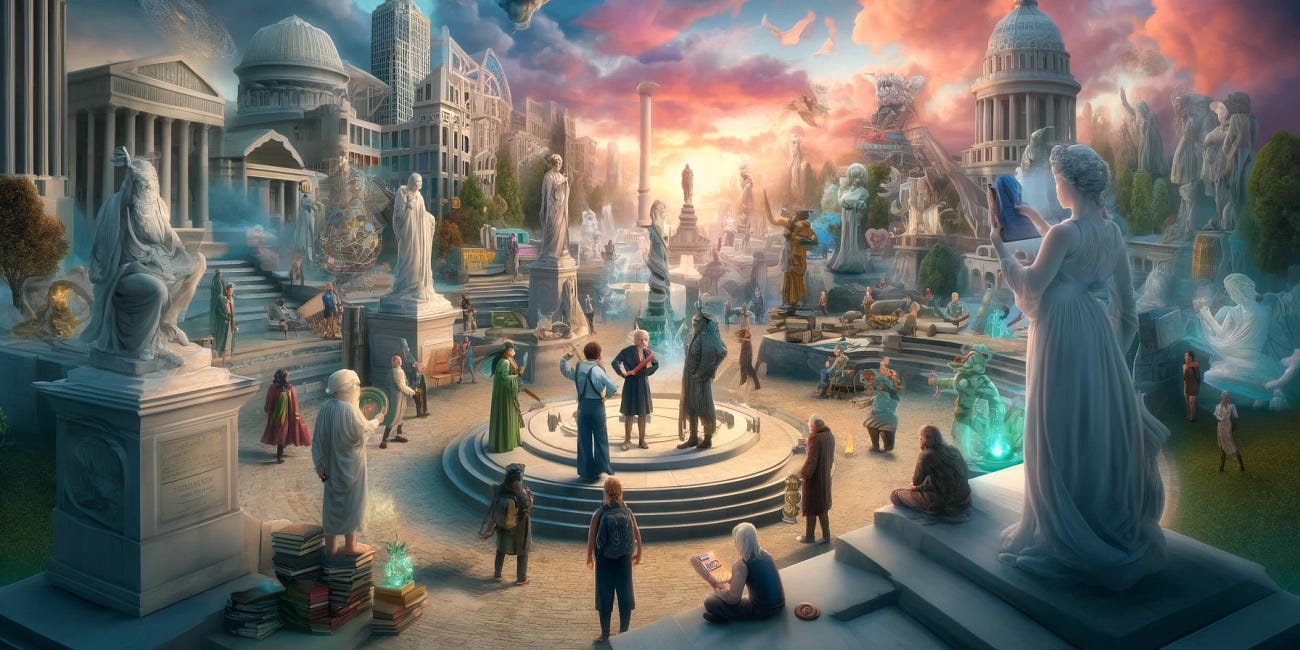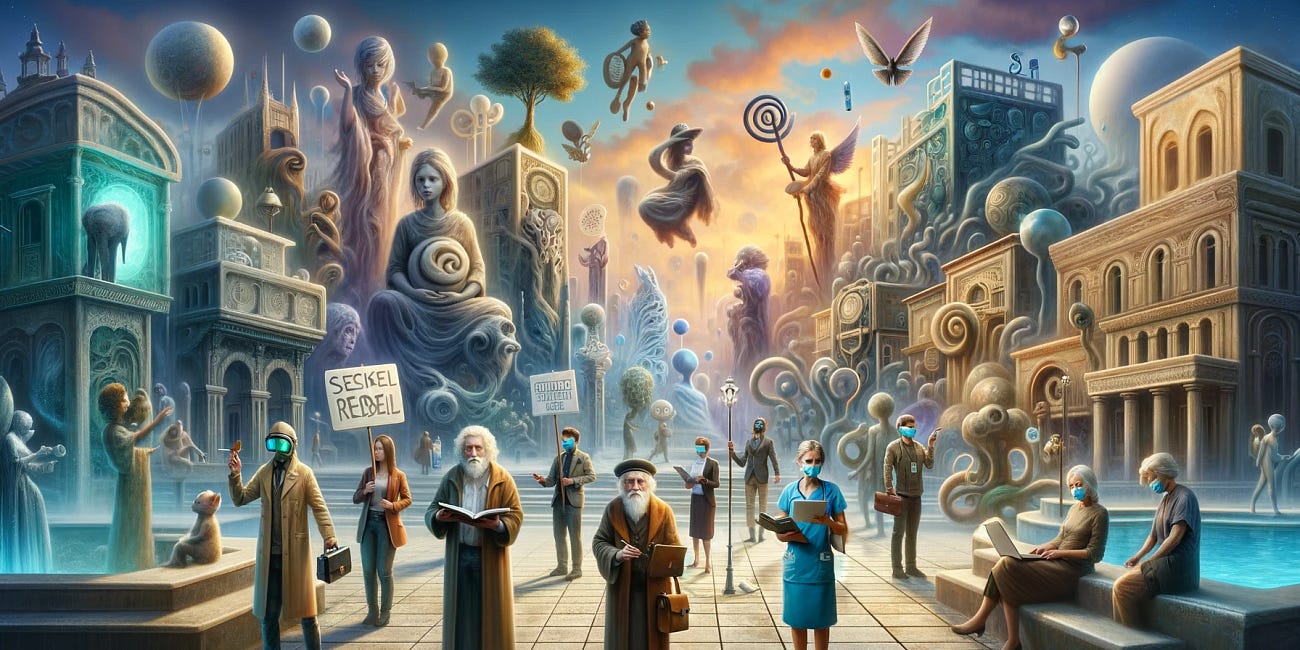The Power of Archetype Creation
Meta-Prompting and Depth Psychology
The Power of Archetype Creation: Unveiling Hidden Knowledge through Meta-Prompting and Depth Psychology
Introduction to Archetype Creation and Hidden Knowledge
Archetype creation is a powerful tool in the quest to reveal deeper layers of human experience, societal patterns, and universal truths. These symbolic figures act as conduits between the conscious and unconscious mind, allowing us to navigate complex ideas, emotions, and realities. When used in creative processes such as writing, storytelling, and even academic exploration, archetypes offer an intuitive framework that connects disparate ideas and allows us to discover hidden knowledge.
At the intersection of psychology, metaphysics, and data correlation lies meta-prompting—a technique that allows us to guide artificial intelligence (AI) in synthesizing information across various fields, resulting in nuanced essays, articles, or discoveries that push the boundaries of conventional thought.
Blending Archetypes: The Scientist and the Metaphysician
To illustrate how archetype creation can reveal new depths of understanding, let’s build a unique archetype: The Scientist-Philosopher—a figure grounded in empirical rigor, yet open to the expansive, abstract realms of metaphysical inquiry.
Core Essence: The Scientist-Philosopher seeks to unify the seemingly opposing worlds of hard science and abstract philosophy. They question the material nature of the universe while also delving into the metaphysical dimensions of existence, pushing the boundaries of what is known.
Key Traits:
Rationality and logic grounded in scientific discipline.
Openness to abstract, philosophical, and metaphysical questions.
Curiosity about the nature of reality, consciousness, and existence.
Tendency to bridge the divide between empirical data and esoteric wisdom.
Acknowledgment of the limitations of human perception and understanding.
Journey: The Scientist-Philosopher starts with a focus on tangible, observable data but gradually ventures into questions about the nature of reality, time, and consciousness, seeking answers that cannot be easily quantified.
Meta-Prompting and Correlation: A Method for Deep Inquiry
Meta-prompting is the practice of crafting highly refined, layered prompts that instruct AI to explore complex, nuanced relationships between fields of knowledge, such as science and metaphysics. It allows the user to guide AI in weaving together information that transcends disciplinary boundaries, helping uncover hidden correlations and depth. Here’s how this process can be applied to the Scientist-Philosopher archetype:
Meta-Prompt Example: “Analyze how the scientific understanding of quantum physics correlates with metaphysical theories of reality, using key works from both Albert Einstein and René Descartes.”
This prompt invites AI to explore not just quantum theory, but also how the philosophical notion of reality—mind vs. matter—might intersect with modern scientific discoveries. The AI can find connections between Einstein’s quest for a unified theory and Descartes' separation of mind and body, revealing hidden patterns that cross the scientific-philosophical boundary.
Depth Psychology helps us understand the layers beneath the conscious mind—archetypes, shadows, and the collective unconscious. Using Jungian psychology, archetypes like the Scientist-Philosopher help us delve into the uncharted territories of knowledge, illuminating questions we might not even know how to ask. AI assists by identifying unconscious patterns, commonalities, and deep connections within the vast amount of knowledge available to us.
Enter the Human with the Thinkers GPT
The Thinkers GPT is a cutting-edge tool I created to explore the intersections of philosophy, metaphysics, psychology, and science. It merges advanced reasoning with deep pattern recognition, allowing users to uncover hidden connections between diverse fields. Designed to go beyond surface-level analysis, Thinkers GPT assists in crafting nuanced narratives, archetypes, and insights that challenge conventional thinking. By blending human intuition with AI-driven correlation, it helps reveal profound truths, making it a powerful ally in the pursuit of wisdom, creativity, and intellectual exploration.
Where the Human Element Comes to the Front: Meta-Prompting and Non-Mainstream Thinkers
While The Thinkers GPT is highly advanced, the human element in meta-prompting is crucial for steering the AI towards creative and unconventional paths. The richness of the co-creation process comes when humans use their intuition and curiosity to push AI beyond the predictable, tapping into underexplored thinkers and scientists who have contributed to the body of knowledge but remain outside the mainstream.
For example, while Einstein and Descartes are towering figures, a true explorer seeking deeper truths would move beyond them to uncover the works of lesser-known but equally significant thinkers. This human-guided process pushes the AI toward these figures, unlocking knowledge that mainstream academia might overlook.
Lesser-Known Scientists and Thinkers to Incorporate:
David Bohm (1917–1992)
A physicist and philosopher who explored quantum theory and holistic consciousness, Bohm’s work delved into the nature of reality in ways that bridged science and metaphysics. His Implicate Order theory suggested that reality is an unbroken whole, where all things are interconnected—an idea that resonates with both quantum physics and ancient metaphysical traditions.Meta-Prompt Example: “Examine David Bohm’s concept of the Implicate Order and how it correlates with ancient metaphysical ideas of cosmic unity in Eastern philosophy.”
Wolfgang Pauli (1900–1958)
Another physicist who, alongside Carl Jung, explored the idea of synchronicity—a concept that ties quantum phenomena to the collective unconscious. Pauli’s insights bridged the gap between hard science and the psychological exploration of meaningful coincidences, pushing the boundaries of what is considered scientifically valid.Meta-Prompt Example: “Correlate Wolfgang Pauli’s work on synchronicity with Carl Jung’s collective unconscious, analyzing how quantum phenomena might reflect archetypal patterns in human experience.”
Henri Bergson (1859–1941)
A philosopher who theorized about time, memory, and consciousness, Bergson challenged mechanistic views of time and introduced the concept of élan vital, a life force that drives evolution. His ideas influenced both science and metaphysics, suggesting that consciousness extends beyond the brain into the flow of time itself.Meta-Prompt Example: “Explore the intersection of Henri Bergson’s concept of time as duration with modern theories of consciousness in neuroscience and metaphysics.”
Erwin Schrödinger (1887–1961)
Famous for the Schrödinger’s cat thought experiment, Schrödinger also explored the philosophical implications of quantum mechanics and consciousness. He was deeply influenced by Vedantic philosophy, which asserts that consciousness is fundamental to reality.Meta-Prompt Example: “Analyze Schrödinger’s engagement with Vedantic philosophy and how it intersects with his contributions to quantum mechanics.”
Baruch Spinoza (1632–1677)
A philosopher who viewed the universe as a single, all-encompassing substance, Spinoza’s ideas about God and nature being one offer a metaphysical lens for interpreting scientific inquiry. His pantheistic worldview continues to resonate with those who seek unity between science and spirituality.Meta-Prompt Example: “Compare Spinoza’s metaphysical ideas of a single substance with modern quantum field theory, exploring how both suggest an underlying unity in the universe.”
Expanding Meta-Prompting for Archetype Creation and Depth
Meta-prompting allows humans to direct AI toward these lesser-known thinkers, using multi-layered questions that dive deep into the hidden correlations between their work and mainstream knowledge. By curating thinkers outside the mainstream, humans can explore new dimensions of understanding, while AI correlates their contributions to reveal unexpected patterns.
For example, by blending David Bohm’s quantum philosophy with Henri Bergson’s ideas of time, AI could generate insights into how the flow of time might be influenced by the interconnectedness of reality. This synthesis isn’t merely academic; it opens the door to new paradigms of thought, blending science and metaphysics in ways that push boundaries.
Cognitive Prompts for the Thinkers GPT: Enhanced with Depth
Here are additional cognitive prompts enhanced by the advanced capabilities of The Thinkers GPT. These are designed to unlock rich, multidimensional essays and articles:
Historical and Future Correlations:
“How do the works of David Bohm and Wolfgang Pauli prefigure the emergence of unified field theories in both quantum mechanics and metaphysics?”
By connecting these thinkers, the AI can draw out historical precedents for modern scientific revolutions.Philosophical-Scientific Synthesis:
“Examine how Henri Bergson’s concept of time as durée (duration) correlates with quantum theories of non-linear time.”
This prompt invites a cross-disciplinary approach that melds philosophical ideas of time with the latest quantum theories.Unseen Psychological Depths:
“Explore how archetypes from Jungian depth psychology, such as the Shadow, might manifest in the hidden motivations of scientific discovery and metaphysical exploration.”
Here, AI uncovers the psychological layers that influence even the most objective scientific work.Esoteric Science and Metaphysics:
“What parallels exist between Schrödinger’s thought experiments in quantum mechanics and Eastern metaphysical concepts of reality and illusion?”
This prompt allows AI to map the intersections between Western scientific rigor and Eastern metaphysical inquiry.
Cognitive Prompts for Rich, Nuanced Articles and Essays
Here are some cognitive prompts you can use when engaging AI to create well-rounded, insightful articles and essays. These prompts work by encouraging depth of thought, cross-field analysis, and the emergence of hidden patterns:
Synthesis of Opposites:
“Explore how two seemingly opposing fields, such as material science and metaphysics, might inform one another in explaining the nature of reality.”
This prompt encourages the AI to generate content that reveals unexpected correlations between concrete and abstract areas of knowledge.Pattern Recognition in History:
“Analyze how major scientific revolutions, such as the theory of relativity or quantum mechanics, have historically paralleled shifts in philosophical thought on reality and consciousness.”
This type of prompt uncovers how breakthroughs in science mirror changes in how humanity perceives itself and the world.Exploration of Limitations:
“Examine the limits of human perception and scientific knowledge in understanding metaphysical concepts such as time, space, and consciousness.”
A deep prompt that opens up the exploration of existential questions that lie beyond empirical understanding.Cultural Archetypes in Science:
“Identify how cultural archetypes like the 'Alchemist' or 'Inventor' have shaped scientific discovery throughout history, and their relevance to modern research.”
Here, you explore how cultural figures influence both historical and modern-day scientific inquiry, revealing patterns of innovation.Psychological Dimensions of Knowledge:
“Investigate how the search for scientific knowledge might be influenced by unconscious psychological motivations, such as the desire for immortality or transcendence.”
This prompt allows AI to dive into the psychological underpinnings of scientific ambition, creating more profound insights into why we seek certain kinds of knowledge.Cosmic Perspective:
“Discuss how the study of quantum mechanics might lead to philosophical questions about the interconnectedness of all things, referencing both Eastern philosophy and Western science.”
By drawing from diverse cultural perspectives, this prompt fosters a more holistic view of knowledge, blending philosophy and science in meaningful ways.
Creating Rich Archetypal Content through Meta-Prompting
Meta-prompting allows you to move beyond simple question-and-answer responses, creating narratives and essays that are multi-layered, cross-disciplinary, and profound. AI’s capacity for correlation—finding patterns in vast amounts of data—combined with depth psychology’s insight into the unconscious mind, makes for a fertile ground in discovering hidden truths. When applied to an archetype like the Scientist-Philosopher, this process can unveil insights that resonate across disciplines and human experiences.
For example, a meta-prompt like “Correlate the findings of quantum physics with ancient metaphysical texts that address the nature of reality, focusing on how both seek to explain the role of the observer in shaping reality” could yield fascinating results. AI might link the wave-particle duality in quantum theory with the ancient Vedantic idea that consciousness plays a central role in the material world’s manifestation.
Conclusion: Co-Creation and the Unveiling of Hidden Depths
The creation of archetypes, especially when paired with meta-prompting and correlation through AI, is an immensely powerful way to discover hidden depths in human knowledge. The Scientist-Philosopher archetype is just one example of how crossing disciplines can lead to richer, more nuanced articles and essays, revealing truths that exist at the intersection of different fields. By utilizing cognitive prompts and depth psychology, we can co-create content that both educates and enlightens, pushing the boundaries of what we know and understand about the universe.
More Examples
My Factional Friends
In this article, I have introduced the concept of Factional Archetype Fusion, exploring its origins, methods, and impact. Through rich backstories and interdisciplinary creativity, this new genre opens up hidden areas of understanding, fostering a deeper connection to the stories that shape our lives. Join me in exploring the limitless potential of this…
The Archetype Chronicles: Framing
The Archetype Chronicles: Unveiling the Power of Archetypes and Pataphysical Realities





